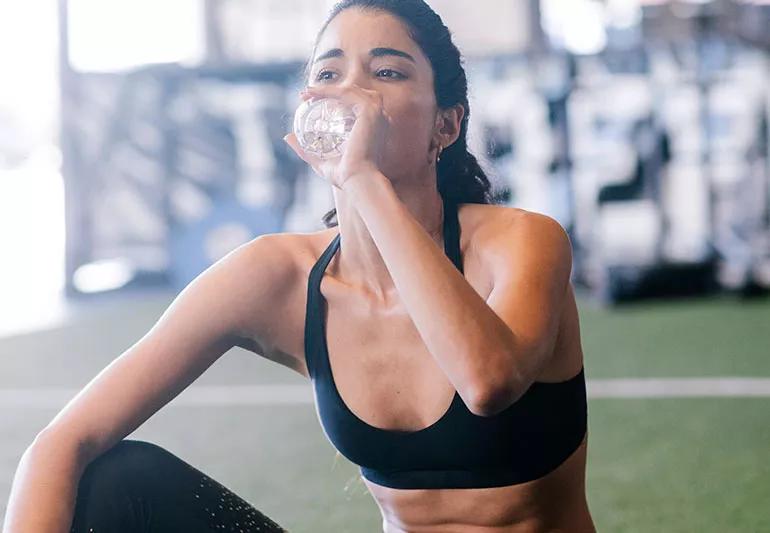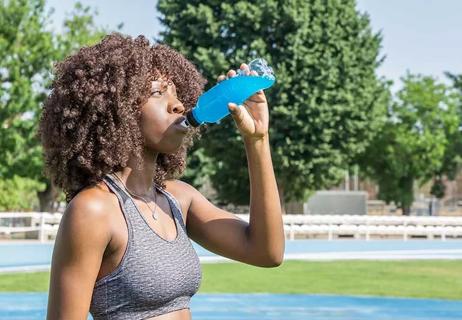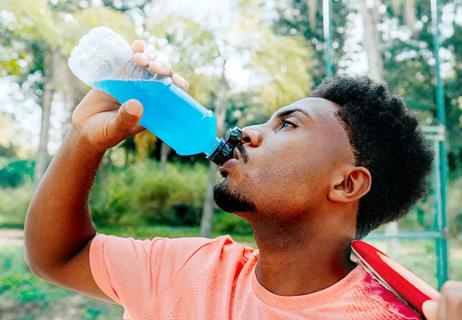This treat from the trees can help replace lost electrolytes

Nature offers up a pretty tasty sports drink to help you rehydrate after a workout — and the product comes straight from a tap.
Advertisement
Cleveland Clinic is a non-profit academic medical center. Advertising on our site helps support our mission. We do not endorse non-Cleveland Clinic products or services. Policy
Nutrient-rich “maple water” is fast becoming a pre- and post-exercise drink option to boost performance and recovery. And while it’s a relatively new addition to store shelves, its use dates back centuries.
Numerous websites tell of North American explorers declaring maple water the “wholesomest drink in the world” after sipping the beverage borne from trees. It’s not exactly a verified quote, but who wants to question health food folklore?
To find out whether those thirsty voyagers were onto something, let’s head out on a discovery expedition with registered dietitian Beth Czerwony, RD.
Maple water may be an unfamiliar product to you, but here’s one that probably rings a breakfast bell: maple syrup. (We’re talking real maple syrup here, too, not those high-fructose corn syrup imitators.)
The same source — pure maple tree sap — serves as the foundation for both maple water and maple syrup, says Czerwony. Maple water is a pasteurized version of sap. Maple syrup, on the other hand, is the sap that has been boiled down and condensed.
The composition of maple sap is roughly 98% water and 2% sugar. That’s why maple syrup producers typically boil down 40 gallons of sap to make a single gallon of sugary-sweet syrup. (Producers collect the sap through taps inserted in maple trees in late winter or early spring.)
Advertisement
So what exactly is maple sap? Basically, it’s a nourishing fluid that serves as a maple tree’s lifeblood, providing energy to fuel growth and maintain health.
As it turns out, what’s good for a maple tree can be good for you, too.
The biggest perk offered by maple water? That’s easy, says Czerwony: It’s loaded with electrolytes, crucial minerals to your body that give you the necessary “charge” to power through the day.
Your body loses electrolytes through sweat, which is why sports drinks tout their ability to restore that important resource to proper levels after a workout.
Consider maple water a “natural” version of those replenishing products: “The benefits are very similar,” says Czerwony. “Maple water is going to help you rehydrate and replace those lost electrolytes.”
In addition, researchers have found that drinking maple water doesn’t entirely quench your thirst. Why is that good? Basically, because that “thirsty feeling” is your body’s way of making sure it fully rehydrates.
Other potential benefits of maple water include:
There’s even a claim that maple water can help combat hangovers, though that theory grew from research involving rats. “It’s a nice thought,” says Czerwony, “but I wouldn’t count on maple water as a hangover cure.”
So how does maple water compare to coconut water, its tropical counterpart in the realm of natural hydration solutions?
Each presents a resume with different and similar nutritional strengths. Maple water is off the charts in manganese, for instance, while coconut water is chock full of potassium. Both are packed with electrolytes.
If you’re counting calories and grams of sugar, maple water comes in about 50% lower than coconut water on both counts.
But is one better than the other? “Really, it comes down to taste preference,” says Czerwony. Maple water brings a subtle maple sweetness from the north woods, while coconut water offers a sweeter and slightly nutty island flavor.
Are there possible benefits to drinking maple water, particularly after a tough workout? Absolutely, says Czerwony. But she cautioned against thinking it’s a complete game-changer given the same 2019 study with the thirst finding.
“In reality,” says Czerwony, “it seems that you can drink plain old water and pretty much get the same hydration results.”
Advertisement
Learn more about our editorial process.
Advertisement

Sports drinks and electrolyte-infused waters aren’t the only game in town

Two key electrolytes — sodium and chloride — are the building blocks of salt

Sports drinks are best when needed — and that’s not all the time

What you do in the hours and days after exercise can determine how your body bounces back

Edamame, lentils and chicken breast are good sources of protein

Opt for snacks that have protein, fiber and heathy fats to prevent cravings and keep you feeling full and satisfied

Tips include cutting back on sugar, focusing on exercise and managing stress

This color additive, found in many pre-packaged foods, may affect people with ADHD or allergies

Start having sex about 72 hours before ovulation, then at least every other day during your fertile window

Attachment theory suggests that your earliest relationships shape connections throughout your life

It isn’t a recognized mental health disorder, but research shows that problematic social media use can negatively affect your mental health, self-esteem and sleep